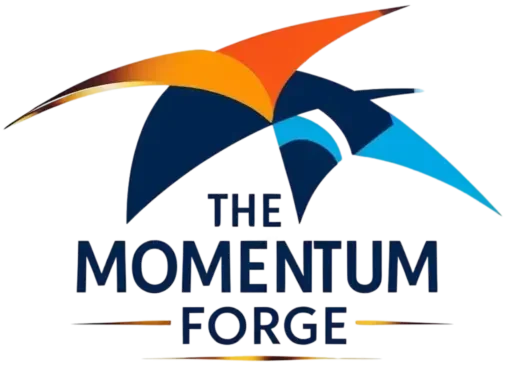Drowning in a sea of tasks? 🌊 You’re not alone. In today’s fast-paced world, it’s easy to feel overwhelmed by the sheer volume of responsibilities on our plates. But what if there was a way to navigate through this chaos with the precision of a seasoned professional?
Enter the art of task prioritization, It’s more than just a productivity hack—it’s a game-changer that can transform your work life. Imagine starting each day with clarity, tackling your most important tasks head-on, and ending with a sense of accomplishment. Sounds too good to be true? It’s not. By mastering the skill of prioritization, you can enhance your productivity, reduce stress, and achieve your goals with remarkable efficiency.
In this blog post, we’ll dive deep into the world of task management, exploring proven techniques like the Eisenhower Matrix, the “Eat the Frog” method, and the power of technology in streamlining your workflow. From creating comprehensive task lists to balancing your workload and avoiding burnout, we’ll equip you with the tools you need to prioritize like a pro. Ready to take control of your tasks and supercharge your productivity? Let’s get started! 💪
Understanding Task Prioritization

A. Definition and importance of prioritization
Prioritization is the process of determining the order and importance of tasks based on their significance and deadlines. It’s a crucial skill for effectively managing both professional and personal responsibilities. By prioritizing tasks, individuals can focus on what truly matters, meet deadlines, and achieve their goals more efficiently.
The importance of prioritization cannot be overstated:
- Improved time management
- Enhanced productivity
- Reduced stress and overwhelm
- Better decision-making
- Increased likelihood of meeting deadlines
- Improved work-life balance
B. The 4 P’s: Prioritize, Plan, Prepare, Perform
The 4 P’s framework provides a structured approach to task management:
| Stage | Description |
|---|---|
| Prioritize | Determine the importance and urgency of tasks |
| Plan | Organize tasks and allocate resources |
| Prepare | Gather necessary information and tools |
| Perform | Execute tasks efficiently |
By following this framework, individuals can ensure they’re focusing on the most critical tasks and completing them effectively.
C. Benefits of effective task management
Effective task management through prioritization offers numerous benefits:
- Increased productivity: By focusing on high-priority tasks, individuals can accomplish more in less time.
- Better workload management: Prioritization helps in balancing urgent requests with ongoing responsibilities.
- Enhanced decision-making: Clear priorities enable better choices about where to invest time and effort.
- Improved quality of work: With proper planning and focus, the quality of output often improves.
- Reduced stress: Knowing what needs to be done and when can alleviate anxiety and pressure.
- Greater satisfaction: Completing important tasks leads to a sense of accomplishment and motivation.
Effective task management also helps in addressing personal obligations and side projects, ensuring a holistic approach to time management.
Now that we have covered the fundamentals of task prioritization, the next section will delve into “Creating a Comprehensive Task List,” which is crucial for implementing these prioritization techniques effectively.
Creating a Comprehensive Task List

Now that we’ve established the importance of task prioritization, let’s dive into creating a comprehensive task list. This crucial step sets the foundation for effective time management and productivity.
A. Aggregating tasks from various sources
To create a truly comprehensive task list, it’s essential to gather tasks from multiple sources. This approach ensures that no important item is overlooked. Consider the following sources:
- Work assignments
- Personal commitments
- Ongoing projects
- Upcoming deadlines
- Regular responsibilities
By aggregating tasks from these diverse areas, you’ll have a holistic view of your commitments, allowing for better prioritization.
B. Including time estimates, importance levels, and due dates
Once you’ve compiled your tasks, enrich each item with additional information:
| Task Attribute | Purpose |
|---|---|
| Time estimate | Helps in scheduling and allocating resources |
| Importance level | Guides prioritization decisions |
| Due date | Ensures timely completion and prevents unnecessary delays |
This detailed approach prevents the “unnecessary limbo” often experienced when tasks lack clear parameters. By assigning these attributes, you can avoid the pitfall of spending time on unneeded or redundant activities.
C. Categorizing tasks into daily, weekly, and monthly items
Effective task management involves categorizing your list based on frequency and urgency:
- Daily tasks: Routine activities that require regular attention
- Weekly tasks: Recurring responsibilities that don’t need daily focus
- Monthly tasks: Longer-term projects or infrequent obligations
This categorization helps in balancing your workload and avoiding burnout. It also allows you to focus on what’s truly necessary, preventing the inclusion of nonessential items that could lead to inefficiencies.
With a comprehensive task list in hand, you’re now prepared to move on to effective prioritization methods. These techniques will help you determine which tasks deserve immediate attention and which can be addressed later, ensuring that your efforts are always directed towards the most impactful activities.
Effective Prioritization Methods

Now that we have created a comprehensive task list, it’s time to explore effective prioritization methods to ensure we focus on the most important tasks. Let’s dive into some proven techniques for prioritizing your tasks like a pro.
A. Eisenhower Matrix: Urgency vs. Importance
The Eisenhower Matrix is a powerful tool that categorizes tasks based on their urgency and importance. This method helps you make quick decisions about task priority by organizing them into four quadrants:
| Urgent | Not Urgent |
|---|---|
| Important | Do First |
| Not Important | Delegate |
By using this matrix, you can easily identify which tasks require immediate attention and which can be scheduled for later or delegated to others.
B. ABCDE Method: Assigning priority grades
The ABCDE method expands on the concept of prioritization by assigning grades to tasks:
- A: Must do (critical tasks)
- B: Should do (important but not critical)
- C: Nice to do (optional tasks)
- D: Delegate (tasks that can be assigned to others)
- E: Eliminate (tasks that can be removed from the list)
This method allows for a more nuanced approach to task prioritization, helping you focus on the most critical activities first.
C. Eat the Frog: Tackling challenging tasks first
“Eat the Frog” is a technique that encourages you to tackle your most challenging or important task first thing in the morning. By completing your “frog” early, you set a positive tone for the rest of the day and ensure that critical tasks are not postponed.
D. Most Important Task (MIT) Method
The MIT method involves identifying and focusing on the most important task of the day. By selecting one to three MITs each day, you ensure that you’re making progress on your most critical objectives, even if unexpected issues arise.
E. Agile Prioritization: Assessing importance, urgency, and dependencies
Agile prioritization techniques, such as the RICE method (Reach, Impact, Confidence, Effort), help teams evaluate tasks based on multiple factors:
- Reach: How many people will this task affect?
- Impact: How much will it influence the outcome?
- Confidence: How certain are we about the potential impact?
- Effort: How much time and resources will it require?
By considering these factors, teams can make data-driven decisions about task priority and resource allocation.
With these effective prioritization methods in mind, we can now move on to exploring strategies for enhancing productivity, which will help us make the most of our prioritized task list.
Strategies for Enhancing Productivity

Now that we have covered effective prioritization methods, let’s explore strategies for enhancing productivity. These techniques will help you make the most of your prioritized tasks and maximize your efficiency.
A. Chunking: Focused work blocks with scheduled breaks
Chunking is a powerful productivity technique that involves breaking your work into focused blocks, interspersed with scheduled breaks. This approach aligns with the Pomodoro technique, which promotes concentrated work intervals followed by short rests. By implementing chunking:
- Allocate specific time periods for tasks
- Minimize distractions during work blocks
- Take regular breaks to maintain cognitive function
| Work Block | Duration | Break |
|---|---|---|
| Focus | 25-30 min | 5 min |
| Extended | 50-60 min | 10 min |
B. Leveraging personal energy levels and rhythms
Understanding and utilizing your personal energy patterns can significantly boost productivity. Consider the following:
- Identify your peak performance hours
- Schedule high-priority tasks during your most productive times
- Align less demanding work with periods of lower energy
By synchronizing your tasks with your natural rhythms, you can optimize your output and maintain consistent productivity throughout the day.
C. Avoiding multitasking and managing distractions
Research shows that only 2.5% of people can multitask effectively. To enhance productivity:
- Focus on single tasks to improve concentration
- Create designated workspaces to minimize interruptions
- Manage notification settings on devices
- Implement time-blocking techniques to allocate specific periods for tasks
D. Regular review and adjustment of priorities
Continuous improvement is key to maintaining high productivity levels. Implement these strategies:
- Conduct performance evaluations and team reviews
- Use time-tracking tools to monitor progress
- Adjust task priorities based on evolving business needs
- Seek feedback from managers and colleagues
By regularly assessing and refining your approach, you can identify areas for improvement and adapt your strategies accordingly.
With these productivity-enhancing techniques in mind, next, we’ll explore how to utilize technology for task management, further streamlining your workflow and boosting efficiency.
Utilizing Technology for Task Management

Now that we’ve explored strategies for enhancing productivity, let’s dive into how technology can revolutionize your task management approach.
A. Project management software benefits
In today’s digital age, project management software has become an indispensable tool for task prioritization and organization. These platforms offer numerous benefits:
- Improved organization and productivity
- Enhanced collaboration among team members
- Better workload balance
- Streamlined communication
- Efficient progress tracking
Popular option like ClickUp provide unique features tailored to different team needs. For instance, Trello excels in visual management with customizable Kanban boards, while Asana offers flexibility for team collaboration.
B. Scheduling and visualizing tasks and deadlines
Effective task management software allows users to schedule and visualize tasks in various ways:
- Kanban boards: Ideal for visual task tracking
- Gantt charts: Perfect for timeline visualization
- Calendar views: Great for deadline management
- List views: Suitable for detailed task breakdowns
ClickUp stands out by offering 14 different task views, providing unparalleled flexibility in task visualization.
C. Facilitating team communication and progress tracking
Task management tools excel in fostering team collaboration and monitoring progress:
- Centralized communication: Many platforms offer built-in chat features and comment sections for tasks.
- File sharing: Easily attach and share documents related to specific tasks.
- Progress tracking: Use features like burndown charts and progress bars to visualize project advancement.
- Automation: Tools like Butler in Trello can automate routine tasks, allowing teams to focus on critical work.
By leveraging these technological solutions, teams can significantly improve their task management efficiency. As we move forward, we’ll explore how to balance workload and avoid burnout, ensuring that these powerful tools contribute to a sustainable and productive work environment.
Balancing Workload and Avoiding Burnout

Now that we’ve explored how technology can enhance task management, let’s shift our focus to a crucial aspect of productivity: balancing workload and avoiding burnout. This section will delve into strategies that help maintain a healthy work-life balance while maximizing efficiency.
Setting realistic expectations and deadlines
To prevent burnout, it’s essential to set achievable goals and timelines. Research shows that unrealistic expectations can lead to chronic stress and exhaustion. Consider the following approaches:
- Regularly assess your workload and capabilities
- Break large tasks into smaller, manageable chunks
- Allow buffer time for unexpected events or complications
- Communicate openly with supervisors about project timelines
Collaborating with team members on task allocation
Effective teamwork can significantly reduce individual stress levels. Here are some ways to promote collaboration:
- Hold regular team meetings to discuss workload distribution
- Encourage open communication about task difficulties
- Utilize each team member’s strengths for optimal task allocation
- Foster a supportive work environment that emphasizes trust and cooperation
Learning to decline non-essential tasks
Prioritizing tasks and learning to say “no” are crucial skills in maintaining a balanced workload. Consider the following strategies:
| Strategy | Benefit |
|---|---|
| Assess task importance | Focus on high-priority work |
| Set clear boundaries | Prevent overcommitment |
| Offer alternatives | Maintain professional relationships |
| Practice assertive communication | Clearly express limitations |
Maintaining flexibility for unexpected events
Adaptability is key in managing workload and preventing burnout. Here’s how to stay flexible:
- Build buffer time into your schedule for unforeseen tasks
- Regularly reassess and reprioritize your task list
- Develop contingency plans for high-priority projects
- Practice stress-management techniques like mindfulness or meditation
By implementing these strategies, you can create a more balanced work environment, reduce the risk of burnout, and maintain long-term productivity. Remember, both employers and employees play crucial roles in fostering a healthy workplace culture that prioritizes well-being alongside performance.

Mastering task prioritization is a crucial skill for enhancing productivity and achieving your goals. By implementing the strategies discussed in this post, such as creating comprehensive task lists, utilizing effective prioritization methods like the Eisenhower Matrix and ABCDE ranking, and leveraging technology for task management, you can take control of your workload and maximize your efficiency.
Remember that prioritization is an ongoing process that requires regular review and adjustment. As you apply these techniques, you’ll develop a better understanding of your work patterns and personal rhythms, allowing you to fine-tune your approach over time. Start implementing these strategies today to transform your task management skills and become a true productivity pro. With practice and persistence, you’ll find yourself accomplishing more, reducing stress, and maintaining a healthier work-life balance.
Disclaimer: The blog has links that I earn from qualifying purchases.
